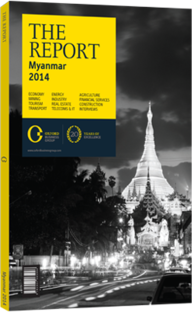A race in the skies: The airline market is becoming increasingly competitive
Soon Myanmar will have a dozen airlines. That is quite a few operators for a country with 1.6m passengers a year, the same number of passengers as Macao, Azerbaijan and Malta. Indeed, Thailand, a country that serves 35m passengers annually, has fewer airlines than Myanmar. To be sure, most of the Myanmar carriers have just a few small planes. The country is also large and diverse, so it might have a need for specialised carriers. Nevertheless, 12 airlines is a lot, especially as safety is one of the primary concerns of the regulators.
“How many airlines do we need?” asked U Win Swe Tun, deputy-director of the Department of Civil Aviation. But he is not so concerned about the number of airlines – as long as they all meet ICAO safety standards – but more about overall competitiveness. International carriers are keen to work their way into the domestic market, and it is abundantly clear that the small, local operators will not be able to go up against better capitalised and more experienced airlines from abroad.
Since 2011
Myanmar has no leading brand. The largest provider of domestic capacity, according to OAG, has only been in business since 2011. And while the country’s airlines are safer than they were a few decades ago, business people and tourists remain wary of domestic carriers and prefer to fly on an international brand. The international airlines are closely watching the Myanmar market and looking for a way in, and if they find one, the local players, as they are currently set up, will likely have a tough time surviving.
“For us, as a regulator, we welcome new airlines or operators,” said U Win Swe Tun. “But we must have the capabilities to compete with the bigger airlines or operators.” The pressure is already on. Three international carriers fly directly to Mandalay, and international flights will soon be commencing to Naypyidaw. If a few more gateways open up, visitors will be able to avoid domestic airlines altogether. However, the real challenge will come in a few years. Regulatory conditions are evolving, and international carriers may soon be able to operate in the country via joint ventures or directly.
If a major international airline takes a stake in a local airline, as AirAsia has done around the region, it will be able to inject significant funds and transfer experience to its local partner. Foreign carriers will also be able to take stakes up to 100% in a variety of aviation-related ventures, such as fuelling, maintenance, baggage handling and catering. This could make a real difference.
Local airline executives say that it is the combination of a carrier and a service that makes for the strongest and most competitive airline.
Multilateral Agreements
The ASEAN Economic Community (AEC) may also put pressure on the local Myanmar airlines as it mandates a single regional aviation market by 2015. The multilateral agreement on air services (MAAS) ends third, fourth and fifth freedom restrictions to ASEAN capitals, while the multilateral agreement on the full liberalisation of passenger air services (MAFLPAS) lifts third, fourth and fifth freedom restrictions for all other ASEAN cities. Investment restrictions are also set to be lifted under the AEC.
However, Indonesia, the largest market in ASEAN, has opted out of MAAS and MAFLPAS, and its absence from the agreements suggests that their application might in practice be difficult. More importantly, the AEC is silent on the eighth freedom and all matters related to cabotage for airlines. The eighth freedom would have been the most threatening for Myanmar, as it would have allowed AEC carriers the right to pick up passengers in one of its cities and drop them in another domestic destination, essentially acting as a domestic carrier. Under MAFLPAS, foreign competitors will only be able to fly to and from Myanmar cities and beyond. In terms of investment, the AEC still allows member state to deny an investment in their domestic airlines, and it is expected this will remain the norm.
For these reasons, Myanmar will be given a period of time to strengthen its airlines and create global competitors. But it is likely that AirAsia-style joint ventures will be involved in this process, giving the foreign carriers effective, and possibly branded, local footprints.
You have reached the limit of premium articles you can view for free.
Choose from the options below to purchase print or digital editions of our Reports. You can also purchase a website subscription giving you unlimited access to all of our Reports online for 12 months.
If you have already purchased this Report or have a website subscription, please login to continue.

